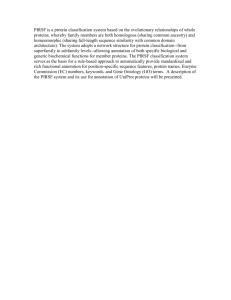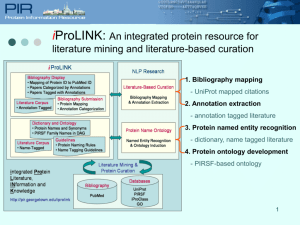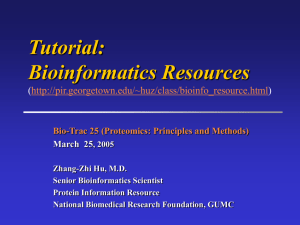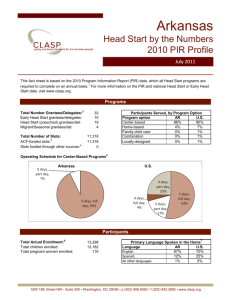PIRSF protein classification system
advertisement
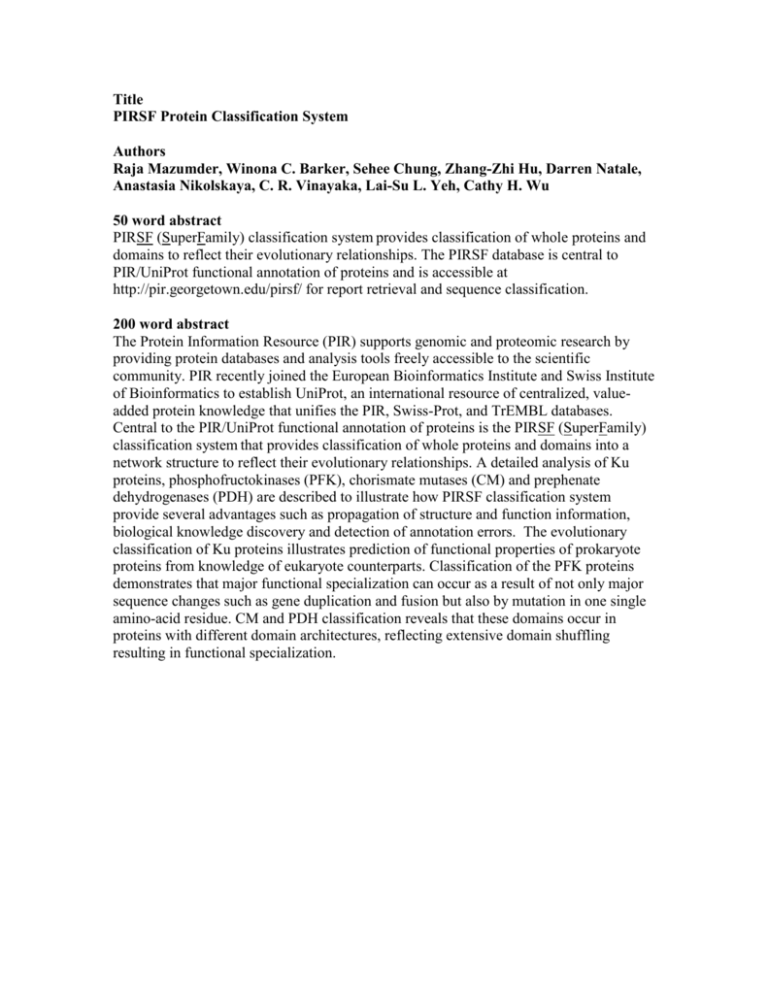
Title PIRSF Protein Classification System Authors Raja Mazumder, Winona C. Barker, Sehee Chung, Zhang-Zhi Hu, Darren Natale, Anastasia Nikolskaya, C. R. Vinayaka, Lai-Su L. Yeh, Cathy H. Wu 50 word abstract PIRSF (SuperFamily) classification system provides classification of whole proteins and domains to reflect their evolutionary relationships. The PIRSF database is central to PIR/UniProt functional annotation of proteins and is accessible at http://pir.georgetown.edu/pirsf/ for report retrieval and sequence classification. 200 word abstract The Protein Information Resource (PIR) supports genomic and proteomic research by providing protein databases and analysis tools freely accessible to the scientific community. PIR recently joined the European Bioinformatics Institute and Swiss Institute of Bioinformatics to establish UniProt, an international resource of centralized, valueadded protein knowledge that unifies the PIR, Swiss-Prot, and TrEMBL databases. Central to the PIR/UniProt functional annotation of proteins is the PIRSF (SuperFamily) classification system that provides classification of whole proteins and domains into a network structure to reflect their evolutionary relationships. A detailed analysis of Ku proteins, phosphofructokinases (PFK), chorismate mutases (CM) and prephenate dehydrogenases (PDH) are described to illustrate how PIRSF classification system provide several advantages such as propagation of structure and function information, biological knowledge discovery and detection of annotation errors. The evolutionary classification of Ku proteins illustrates prediction of functional properties of prokaryote proteins from knowledge of eukaryote counterparts. Classification of the PFK proteins demonstrates that major functional specialization can occur as a result of not only major sequence changes such as gene duplication and fusion but also by mutation in one single amino-acid residue. CM and PDH classification reveals that these domains occur in proteins with different domain architectures, reflecting extensive domain shuffling resulting in functional specialization.
